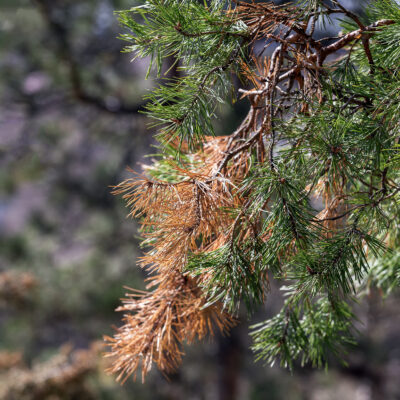Blog, What's Wrong With My Trees?
What’s Wrong With My Trees: Freeze Damage
Freeze damage to your trees is most likely to occur when temperatures drop below 20 degrees Fahrenheit for a prolonged period or with temperature fluctuations. According to The Morton Arboretum, “Plants to most likely suffer winter injury are those that are marginally hardy for the area or those already weakened by previous stress.”
 Symptoms of freeze damage in your trees
Symptoms of freeze damage in your trees
The symptoms of freeze damage can sometimes be confused with look-alike diseases. But unlike these progressive diseases, freeze damage symptoms appear suddenly.
Symptoms include:
- Blacking and shriveling of tissue
- Stunted growth
- Frost cracks (areas of the bark split open)
- Browning needles and leaves on evergreens
Freeze damage can happen in the spring and winter when temperatures rapidly fluctuate.
Managing freeze damage
You can prevent freeze damage in your small trees and shrubs, as well as salt damage, by wrapping them in burlap or other insulating, protective material. Remember to keep your trees and shrubs watered if the winter has been dry, needles are browning, or the tree is newly transplanted. Lastly, applying an anti-desiccant to susceptible evergreen plants is a way to ensure that tissues do not dry up and cause damage. Managing plants that have already sustained damage may be more complex.
Looking to protect your evergreen trees and shrubs from the winter ahead or have some that have been damaged from winter injury? Contact the professional ISA Certified Arborists at Hansen’s Tree Service to assess utilizing best management practices and offer professional recommendations to manage discovered risk.
